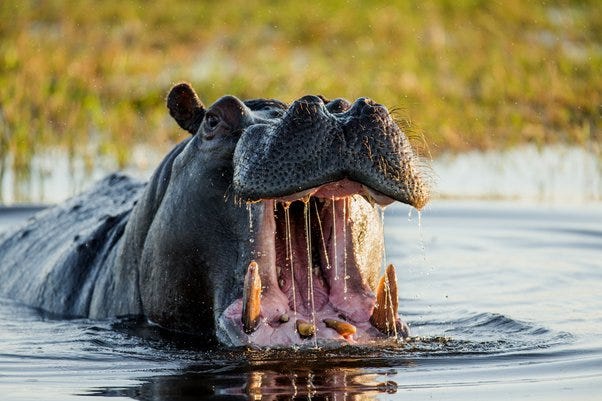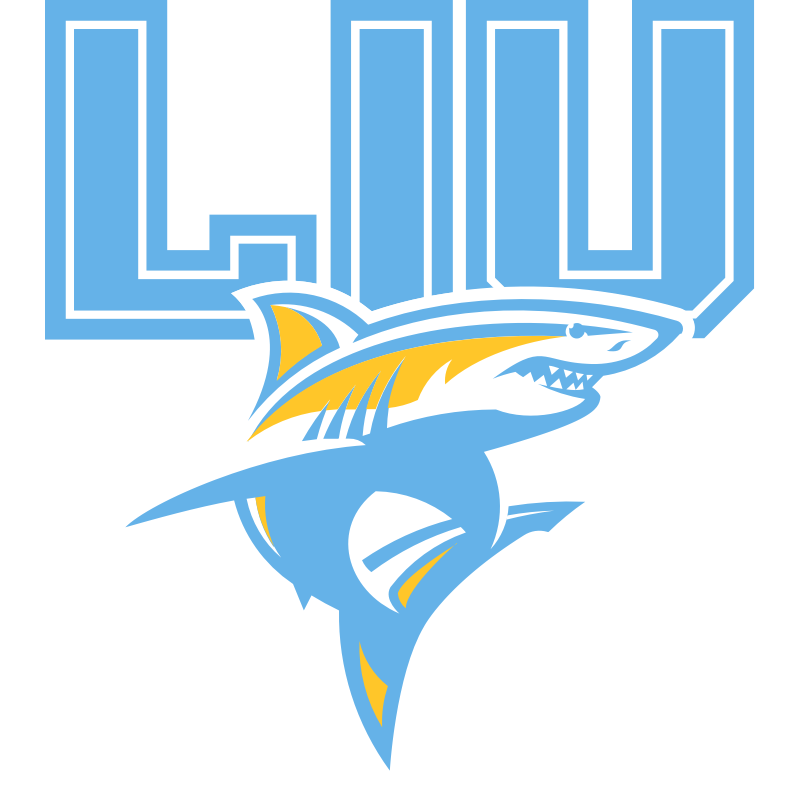How George Washington perpetuated college sports' mascot problem
A unique animal nickname, the Hippos, was right there for them, but they bypassed it.
Last June, George Washington University announced that it was removing “Colonials” as the name for its athletic teams after nearly a century of use.
By definition, the school’s namesake was a colonial, born in Virginia when it was a colony of England, but the term itself has a sordid history that has been the subject of increased debate and examination over the past decade or so.
“For opponents, ‘Colonials’ means colonizers (both here and abroad) and refers to those who stole land from indigenous groups, plundered their resources, murdered and exiled Native peoples, and introduced slavery into the colonies,” a report from a George Washington special committee read.
The decision generated a slew of headlines and ignited a culture war because of course it did, with a predictable cast of characters decrying it as yet another sign of the out-of-touch academic establishment placating an unreasonable mob.
About a year later, a replacement was revealed. GW’s teams will henceforth be known as the “Revolutionaries.”
The final choice offered an opportunity for some reheated grievances, but those complaints overlooked a much more pressing point.
The name change itself wasn’t the problem. If a notable percentage of those at a university with students from more than 135 different countries can’t bring itself to embrace or feel included by a nickname meant to unify those thousands of students from disparate parts of the world, it’s worth at least a thought to change it. Besides, “Colonials” isn’t a particularly cool, imposing or unique moniker.
While “Revolutionaries” is an improvement, there was a better option out there with a fun, inextricable tie to the university. The school’s leadership just bafflingly chose not to pursue it – and because of that, we’ll never know the wonder of watching an athletic competition featuring the George Washington University Hippos.
How the hell did a hippo become a GW icon?
On the corner of 21st Street and H Street Northwest on GW’s campus in Washington’s Foggy Bottom neighborhood, there’s a bronze statue of a hippopotamus.
On an urban campus without much in the way of green space or iconic landmarks, the statue – known as “The River Horse” – has become a beloved fixture among students, who pose for pictures in front of it and rub its nose for good luck.
The story behind the statue is fittingly bizarre.
In 1996, then-GW president Stephen Trachtenberg was in Newport, R.I. taking a summer course at the Naval War College. One day, he wandered into an antique store and came upon the large bronze hippo. He was instantly smitten.
"I fell in love, but I resisted," he told the Washington Post later that year. "It was pleading to be released. It said ‘Take me back to Washington. I heard GW was ranked 46th academically and is the second-best party school, and I am a party animal.'”
The following day – after he “finished drinking his lunch,” as Trachtenberg put it –– he returned to the store and chatted with the seller, who provided him with even more booze. He ended up buying the statue, ponying up $3,200 of his own money because he “felt bad.” Several weeks later, the statue was shipped to his house. His wife, who clearly had very little desire to plop a giant bronze hippo on their lawn, forwarded it to the GW campus. There, it was repurposed by Trachtenberg as a gift to GW’s class of 2000 and placed where it currently resides in front of Lisner Auditorium.
Regifting the statue wasn’t enough for Trachtenberg. He understood the hippo’s arrival would come with some questions – how could it not? – so he crafted a backstory that lives on a plaque adjacent to the statue. According to legend, it says, George and Martha Washington would watch hippos cavort in the Potomac River from the back porch of their Mount Vernon home on summer nights. The animals were credited with enhancing the fertility of the plantation and the Washingtons believed the hippos had an almost mystical power, so much so that their children would try to lure the hippos to shore and touch their noses for good luck.
The story, of course, was nonsense, something Trachtenberg admitted to in the years that followed.
It mattered little, though. The hippo had become the university’s unofficial mascot and by 2019, an online petition had circulated to change the name from Colonials to Hippos, citing many of the same qualms that would ultimately get Colonials scrubbed a few years later.
When replacement names were bandied about last year, Hippos quickly emerged as a natural, even obvious option.
By Jan. 2023, though, the dream was dead before it could really even begin to take hold. As GW moved forward with its search for its new nickname, Hippos would not be under consideration. For one, the moniker didn’t align with the “guiding principles” of whatever the final selection would be, part of a sanitized word salad conjured up by an army of consultants and marketing specialists.
Shaping the Future: This will honor GW’s long history developing students into leaders, doers and thinkers.
Free to Be Bold: This will symbolize the university’s trailblazing spirit.
At the Center of Power: This will reflect the energy and drive that brings the GW community to Washington, D.C., to be changemakers on the world stage.
Jargon aside, the university eventually got to a more illuminating, albeit frustrating reason, why it shoved aside such a popular choice so early in the process. It received negative feedback from engagement events with members of the GW community, most notably from its athletes, who would have to wear the moniker on the fields and courts of competitions.
It’s not the fault of the athletes, who have understandable concerns about being so closely associated with an animal that seldom inspires anything remotely threatening in the popular imagination. If anything, it’s our fault for never widely reckoning with a fundamental truth – hippos are very much worthy of our fear.
Hippos are the kinds of predators that usually terrify us
Take a moment to close your eyes for a few seconds and draw a mental picture of a hippo.
It’s probably pretty cute, right? It’s got big eyes, hilariously disproportionately small ears and a toothy grin, with a fat, lumbering frame. The large aquatic mammals are typically presented that way in cartoons, illustrated books and, of course, tabletop games where they gobble up small white marbles. My four-month-old son has a playmat with three buttons he can kick, each with a different animal on it. One of those animals? A hippo, with an accompanying song about the happy hippo that smiles all day.
In reality, hippos bear little, if any, resemblance to the way they’re frequently packaged.


They’re the third-largest living land mammal, behind only the elephant and white rhino, with common hippos ranging from 1.4 to five tons. While large, they’re not fat. Their girth is merely a way to help them with their buoyancy and swimming. They can lift themselves up onto objects. They have enormous tusks that can grow to be over a foot long. On land, they can run fast over short distances, reaching speeds as high as 20-30 miles per hour.
Most of all, while crocodiles, lions and hyenas prey on young hippos, adult hippos don’t really have any natural predators beyond human poachers because of their size and aggression. It’s not the lion that’s the king of the African wilderness; it’s the hippo.
“They are kind of a cute-looking animal, but they’re one of the most dangerous animals out there,” Brian Aucone, the senior vice president for life sciences at the Denver Zoo, told me. “They’re certainly the most dangerous in Africa. They’re very aggressive, they’re very agile, they’re very territorial and there’s not much that they’re afraid of. They’re known to attack fisherman’s boats. They’ll go after lions that are going after their babies. Most people don’t seem to know that.”
While there aren’t reliable numbers about how many humans hippos have killed, you don’t have to search particularly hard online to find videos of hippos going after other animals or swimming furiously after boats carrying human passengers.
“It’s interesting when you think about Africa and all the things that are out there that the hippo is considered the most dangerous animal from a people perspective,” Aucone said. “You’ve got lions, you’ve got leopards, you’ve got hyenas and wild dogs. I think people always perceive those to be the aggressors, but they rarely are. In fact, they’re probably a lot more afraid of you as a human than a hippo ever will be. Those animals are much more likely to use caution before they would come and try to attack a person whereas a hippo can be very aggressive if it feels like its territory is being invaded. It’s not shy about just coming right after you.”
The hippo is the cure to the unimaginative college mascot
Because of those misconceptions, lions, leopards and other big cats are widely viewed as killing machines while hippos are relegated to being plump, adorable oafs. It’s the hippos, though, that have many of the traits a sports team might look for in an animal mascot – strength, power, sheer size and an unmistakable fearlessness.
Yet one group of mammals dominates the American mascot realm at the pro and college level while the other is non-existent.
It’s particularly noticeable in the Division I ranks, where there’s an astonishing amount of homogeneity among animal nicknames. Of the 210 Division I universities with a men’s basketball team with an animal mascot, a whopping 48.1% are represented by just seven different animals – panthers and all of its variations (19), hawks (16), eagles (16), bulldogs (15), bears (13), tigers (12) and wildcats (10).
To be fair, there are plenty of schools with interesting and distinctive nicknames, like the Oregon Ducks, Oregon State Beavers, Wisconsin Badgers, Minnesota Golden Gophers, Arkansas Razorbacks, Richmond Spiders and Youngstown State Penguins. There just simply aren’t enough of them.
That issue has been compounded by a solution – replacing outdated, offensive and sometimes flatly racist nicknames – that has ended up generating more problems. Since 1990, there have been eight instances of a current Division I member changing its name. Here’s how six of them went:
Eastern Michigan: Hurons to Eagles, 1991
Louisiana-Monroe: Indians to Warhawks, 2006
Miami (Ohio): Redskins to RedHawks, 1997
North Dakota: Fighting Sioux to Fighting Hawks, 2010s
Quinnipiac: Braves to Bobcats, 2002
St. John’s: Redmen to Red Storm, 1995 (the school claims old name didn’t refer to Native Americans, just the teams’ primary color, but it nonetheless caused some confusion)
In each case, it’s either an animal mascot that’s nauseatingly common, often a bird of prey, or something bland and generic. Moreover, they were chosen when a number of other criminally underutilized – if they’re even utilized at all – animal options were right there. Here’s just a small sampling of some possibilities:
Snakes: For any number of reasons, some of which make more sense than others, a lot of people are terrified of snakes. Even Indiana Jones is. There’s a plethora of different species to choose from. Some snakes like cobras and rattlesnakes are venomous, with a poisonous bite that can kill even large victims. Others like anacondas or boa constrictors strangle and later eat their prey.
Yet only one Division I school, the Florida A&M Rattlers, use a serpentine mascot.
“I would say if you take all the animals that are out there, there’s probably far more people who are intimidated and afraid of snakes than any of those other animals you have out there that are predators that tend to be chosen,” Aucone said. “Snakes can be very intimidating. There are many people who don’t even like the image of a snake, never mind the thought of a snake. But you don’t see anybody out there that does that.”
Rhinoceros: One of the only land mammals bigger than a hippo, the rhino is a huge creature – white rhinos can weigh over two tons – that possesses a rare combination of speed and brute strength. Rhinos can run up to 30 miles per hour, don’t have any natural predators and have whatever intimidation factor comes with a sharp horn.
How has no college embraced that?
Orcas: Popularly known as killer whales, they’re apex predators that feast on the likes of fish, seals, sharks, dolphins and even other whales. While their habitat near the United States is limited to the west coast, there are still plenty of schools in that region that could have adopted it as a mascot yet chose not to do so. In my research, I only came across Whatcom Community College in Bellingham, Wash.
Due in large part to movies like Free Willy and orcas serving as performers at places like SeaWorld, they became much like hippos – ruthlessly effective hunters that are somehow seen as cuddly.
“People think they’re majestic and serene and they’re actually deadly predators,” Aucone said.
Seriously, it doesn’t have to be this way
Long Island University, one of the schools not listed among those that have changed animal mascots over the past three decades, has recently shown there’s a better, sadly less-traveled path forward for selecting a new animal mascot.
After LIU’s Brooklyn and Post campuses merged, the university wanted to create a new, shared identity. There was some fuss about the decision from fans and alums who liked LIU Brooklyn’s previous nickname, the Blackbirds, but LIU made the most of the opportunity it granted itself. Over three weeks in the spring of 2019, it held a vote between three finalists for a new name – Eagles, Falcons and Sharks.
Ultimately, and fortunately, Sharks won out, giving LIU not only a fearsome predator of a mascot that can be found off the coast of Long Island, but making it the first Division I school with that nickname.
“The shark is an animal which embodies strength, resolve, and brilliance, all of which characterize the spirit of LIU and the individuals who comprise our extraordinary University,” a release from the school announcing the new name read.
LIU’s prudent choice only magnifies GW’s missteps.
University leadership perhaps set itself up for a headache like the one it just endured. “Revolutionaries” embodies the university’s namesake while giving their teams sort of an outlaw panache, but like “Colonials”, it’s a word that can be interpreted a number of different ways.
The revolution George Washington and his counterparts waged in what became the United States freed them from the overbearing control of a tiny island thousands of miles away and saved future generations of Americans from the horrors of British cuisine. Some revolutions, however, lead to tyrannical, murderous regimes that physically and mentally scar millions of a country’s citizens. Hell, some of the people storming the U.S. Capitol on Jan. 6 viewed themselves as revolutionaries. Would it be any surprise if GW finds itself in the same position years from now, grappling with the meaning of its nickname while feverishly trying to come up with alternatives?
If that moment ever arrives, they shouldn’t have to worry. There’s a wonderful solution waiting right there for them with an open mouth, flashing tusks and a nose to rub.





